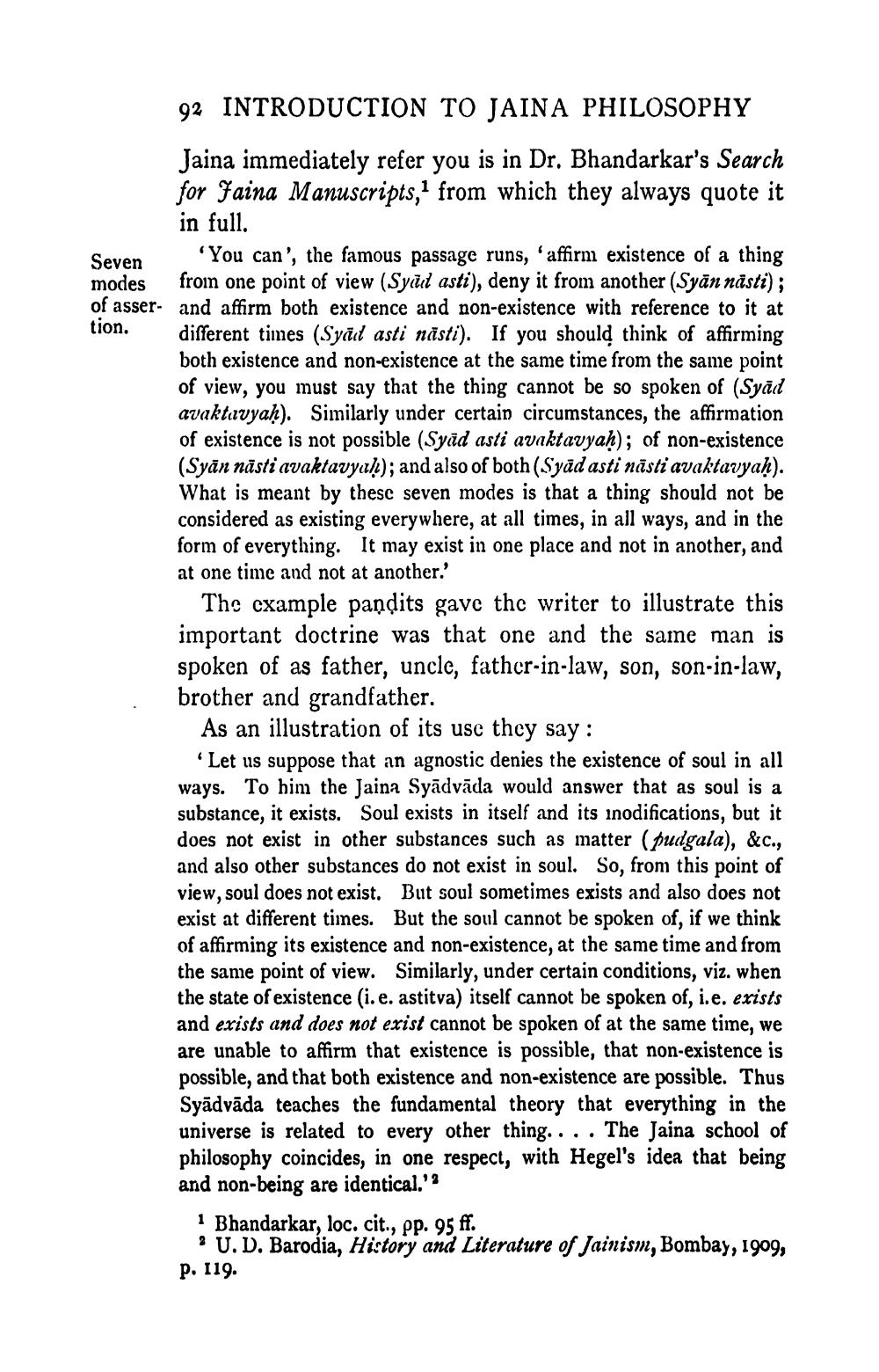________________
Seven
modes of assertion.
92 INTRODUCTION TO JAINA PHILOSOPHY
Jaina immediately refer you is in Dr. Bhandarkar's Search for Faina Manuscripts,1 from which they always quote it in full.
'You can', the famous passage runs, 'affirm existence of a thing from one point of view (Syad asti), deny it from another (Syān nästi) ; and affirm both existence and non-existence with reference to it at different times (Syad asti nästi). If you should think of affirming both existence and non-existence at the same time from the same point of view, you must say that the thing cannot be so spoken of (Syad avaktavyah). Similarly under certain circumstances, the affirmation of existence is not possible (Syad asti avaktavyaḥ); of non-existence (Syän nästi avaktavyah); and also of both (Syad asti nāsti avaktavyaḥ). What is meant by these seven modes is that a thing should not be considered as existing everywhere, at all times, in all ways, and in the form of everything. It may exist in one place and not in another, and at one time and not at another.'
The example pandits gave the writer to illustrate this important doctrine was that one and the same man is spoken of as father, uncle, father-in-law, son, son-in-law, brother and grandfather.
As an illustration of its use they say:
'Let us suppose that an agnostic denies the existence of soul in all ways. To him the Jaina Syādvāda would answer that as soul is a substance, it exists. Soul exists in itself and its inodifications, but it does not exist in other substances such as matter (pudgala), &c., and also other substances do not exist in soul. So, from this point of view, soul does not exist. But soul sometimes exists and also does not exist at different times. But the soul cannot be spoken of, if we think of affirming its existence and non-existence, at the same time and from the same point of view. Similarly, under certain conditions, viz. when the state of existence (i. e. astitva) itself cannot be spoken of, i.e. exists and exists and does not exist cannot be spoken of at the same time, we are unable to affirm that existence is possible, that non-existence is possible, and that both existence and non-existence are possible. Thus Syadvāda teaches the fundamental theory that everything in the universe is related to every other thing. . . . The Jaina school of philosophy coincides, in one respect, with Hegel's idea that being and non-being are identical.'"
1 Bhandarkar, loc. cit., pp. 95 ff.
2 U. D. Barodia, History and Literature of Jainism, Bombay, 1909, p. 119.




